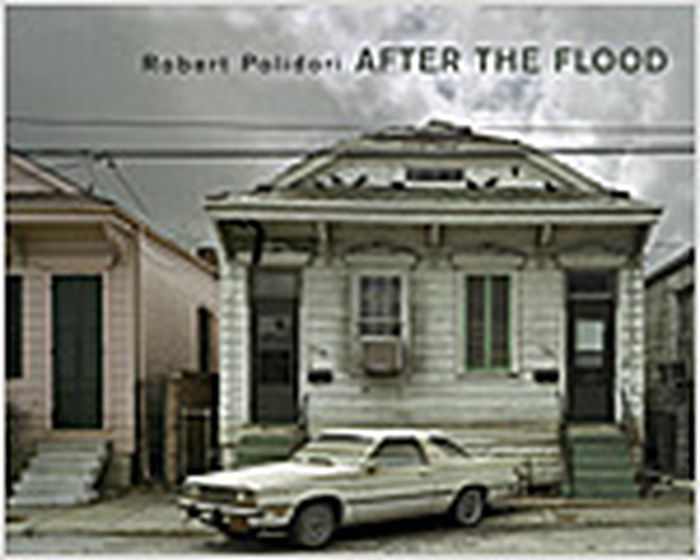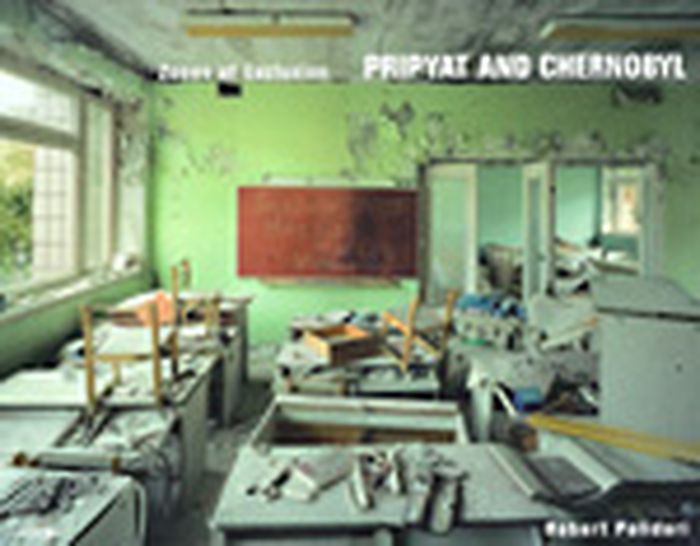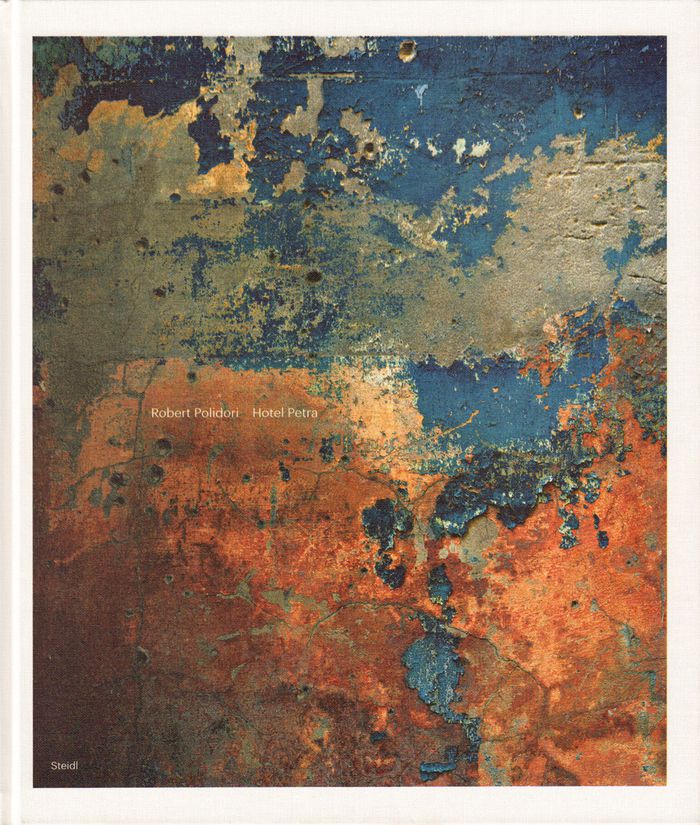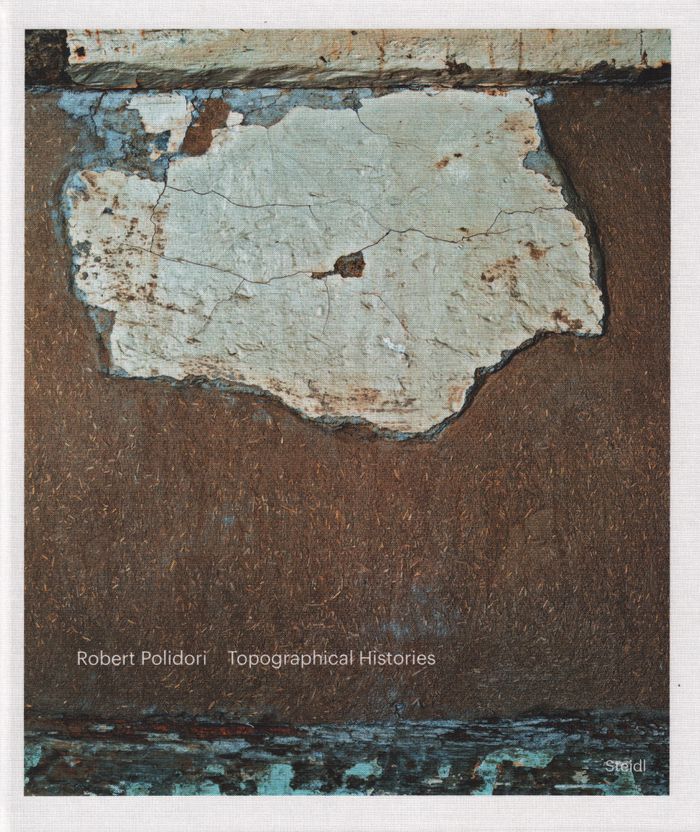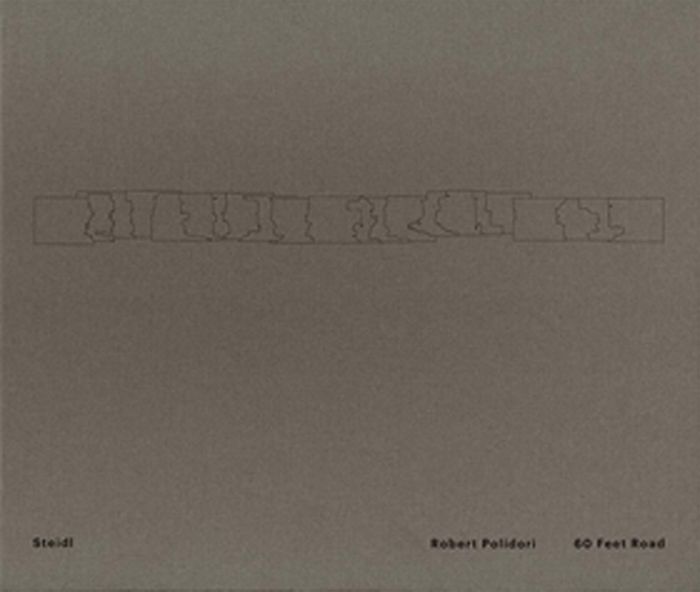After the flood
$108.00
(disponible sur commande)
Résumé:
In late September 2005, Robert Polidori traveled to New Orleans to record the destruction caused by Hurricane Katrina and by the city’s broken levees. He began to photograph, house by house. Polidori has found something worth saving, has created mementos for those who could not return, documenting the paradoxically beautiful wreckage. In classical terms, he has found(...)
After the flood
Actions:
Prix:
$108.00
(disponible sur commande)
Résumé:
In late September 2005, Robert Polidori traveled to New Orleans to record the destruction caused by Hurricane Katrina and by the city’s broken levees. He began to photograph, house by house. Polidori has found something worth saving, has created mementos for those who could not return, documenting the paradoxically beautiful wreckage. In classical terms, he has found ruins. The abandoned houses he recorded were still waterlogged as he entered and as he learned (by trial and error, a process that including finding a dead body) the language of signs and codes in which rescue workers had spray-painted each house’s siding. He sees the resulting photographs as the work of a psychological witness, mapping the lives of the absent and deceased through what remains of their belongings and their homes.
Monographies photo
$86.00
(disponible sur commande)
Résumé:
In the 11 days following the Chernobyl catastrophe on April 26, 1986, more than 116,000 people were permanently evacuated from the area surrounding the nuclear power plant. Declared unfit for human habitation, the zones of exclusion includes the towns of Pripyat (established in the 1970s to house workers) and Chernobyl. In May 2001, Robert Polidori photographed what was(...)
Robert Polidori : zones of exclusion : Pripyat and Chernobyl
Actions:
Prix:
$86.00
(disponible sur commande)
Résumé:
In the 11 days following the Chernobyl catastrophe on April 26, 1986, more than 116,000 people were permanently evacuated from the area surrounding the nuclear power plant. Declared unfit for human habitation, the zones of exclusion includes the towns of Pripyat (established in the 1970s to house workers) and Chernobyl. In May 2001, Robert Polidori photographed what was left behind in the this dead zone. His richly detailed images move from the burned-out control room of reactor 4, where technicians staged the experiment that caused the disaster, to the unfinished apartment complexes, ransacked schools and abandoned nurseries that remain as evidence of those who once called Pripyat home. Nearby, trucks and tanks used in the cleanup efforts rest in an auto graveyard, some covered in lead shrouds and others robbed of parts. Houseboats and barges rust in the contaminated waters of the Pripyat River. Foliage grows over the sidewalks and hides the modest homes of Chernobyl. In his large-scale photographs, Polidori captures the faded colors and desolate atmosphere of these two towns, producing haunting documents that present the reader with a rare view of not just a disastrous event, but a place and the people who lived there.
Monographies photo
Robert Polidori: Hotel Petra
$70.00
(disponible en magasin)
Résumé:
This book is Robert Polidori’s portrait of the interiors of the now demolished Hotel Petra in Beirut, a grand icon of the city’s prewar history. The Hotel Petra was once one of the most popular hotels in Beirut, conveniently located in the city center adjacent to the Grand Theatre. After the Lebanese Civil War of 1975–90, Rafiq al-Hariri founded a holding company,(...)
Robert Polidori: Hotel Petra
Actions:
Prix:
$70.00
(disponible en magasin)
Résumé:
This book is Robert Polidori’s portrait of the interiors of the now demolished Hotel Petra in Beirut, a grand icon of the city’s prewar history. The Hotel Petra was once one of the most popular hotels in Beirut, conveniently located in the city center adjacent to the Grand Theatre. After the Lebanese Civil War of 1975–90, Rafiq al-Hariri founded a holding company, Solidere, whose goal was the selective demolition and reconstruction of downtown Beirut’s urban fabric. In 1992 the Hotel Petra was set aside for later restoration, and from that moment essentially cut off from any human intervention.
Monographies photo
$57.50
(disponible sur commande)
Résumé:
This book presents 35 photos of the Getty Center taken shortly before the 1997 opening of its new multipurpose complex designed by Richard Meier. Published to coincide with the 20th anniversary of the center, the book reveals behind-the-scenes views of the building as objects from J. Paul Getty’s painting, sculpture and decorative arts collections were being installed(...)
Monographies photo
février 2018
Robert Polidori: synchrony and diachrony. Photographs of the J. Paul Getty Museum 1997
Actions:
Prix:
$57.50
(disponible sur commande)
Résumé:
This book presents 35 photos of the Getty Center taken shortly before the 1997 opening of its new multipurpose complex designed by Richard Meier. Published to coincide with the 20th anniversary of the center, the book reveals behind-the-scenes views of the building as objects from J. Paul Getty’s painting, sculpture and decorative arts collections were being installed inside it. In September 1997 the New Yorker commissioned Robert Polidori (born 1951) to photograph Meier’s building. Within 48 hours he had made images of its exterior but was dissatisfied. Polidori wanted to document the museum’s interior, and proceeded to photograph the rooms in which artworks were either freshly installed or still being so. The resulting photos show the museum in the process of taking shape, expose the mechanics of curatorship.
Monographies photo
$69.95
(disponible sur commande)
Résumé:
Robert Polidori (born 1951) has been making books at Steidl for over 18 years now, and for many of his visits he lodged in an apartment adjacent to the publishing house. To the left of this, at Düstere Straße 6, stands a small humble house, not only the oldest dwelling in Göttingen but, dating back to 1310, one of the oldest half-timbered houses in all of Germany.(...)
Robert Polidori: topographical histories
Actions:
Prix:
$69.95
(disponible sur commande)
Résumé:
Robert Polidori (born 1951) has been making books at Steidl for over 18 years now, and for many of his visits he lodged in an apartment adjacent to the publishing house. To the left of this, at Düstere Straße 6, stands a small humble house, not only the oldest dwelling in Göttingen but, dating back to 1310, one of the oldest half-timbered houses in all of Germany. Miraculously never demolished over the centuries (just altered, repaired and patched up), it has now been restored by Gerhard Steidl and today houses the Günter Grass Archive, part of the University of Göttingen. ''Topographical Histories'' presents Polidori's 2016 photos of the interior walls of the building, whose glorious crumbling layers- 14th-century structures of wattle and daub, clay bricks and plaster, and remnants of paint and wallpaper from different centuries- bear witness to living history.
Monographies photo
$162.50
(disponible en magasin)
Résumé:
In his new book, Robert Polidori presents us with a large-format photograph of a city block in an improvisational, auto-constructed settlement in Mumbai, India. In an almost seamless progression that appears to expand like an accordion or folding-screen, the photograph is composed of multiple images imperceptibly overlaid and welded together in a complex process to form a(...)
Robert Polidori: 60 feet road, Bhatuya Nagar facades
Actions:
Prix:
$162.50
(disponible en magasin)
Résumé:
In his new book, Robert Polidori presents us with a large-format photograph of a city block in an improvisational, auto-constructed settlement in Mumbai, India. In an almost seamless progression that appears to expand like an accordion or folding-screen, the photograph is composed of multiple images imperceptibly overlaid and welded together in a complex process to form a panoramic view. Applying remote sensing techniques that are normally used in space cartography to street photography, Polidori ventures a photographic attempt to come to terms with the phenomena of adjacencies, observing and beholding what’s next to what.
Monographies photo
$49.95
(disponible sur commande)
Résumé:
An archaeologist of haunted walls and loaded spaces, Robert Polidori photographs the inside and the outside of private and public dwellings as they transition from one state to another, whether from humble household to horrific disaster zone, or dilapidated grandeur to hygienic modernity. Some Points in Between assembles, for the first time, each of Robert Polidori's(...)
Some points between...up till now
Actions:
Prix:
$49.95
(disponible sur commande)
Résumé:
An archaeologist of haunted walls and loaded spaces, Robert Polidori photographs the inside and the outside of private and public dwellings as they transition from one state to another, whether from humble household to horrific disaster zone, or dilapidated grandeur to hygienic modernity. Some Points in Between assembles, for the first time, each of Robert Polidori's major photographic series in one affordably priced volume: Beirut (on post-civil-war Lebanon), Versailles (on the restoration of the palace), Havana (on Castro's Cuba), After the Flood (on post-Katrina New Orleans) and Zones of Exclusion (on the nuclear disasters at Pripyat and Chernobyl).
Monographies photo
$50.00
(disponible sur commande)
Résumé:
From his images of the Chateau of Versailles under restoration to the faded grandeur of Havana, to scenes of devastation from Chernobyl after the nuclear explosion and a New Orleans ravaged by Hurricane Katrina, Robert Polidori is drawn to detritus, shattered worlds and elegant ruin. Often considered an architectural photographer, Polidori captures more than buildings:(...)
Robert Polidori: chronophagia
Actions:
Prix:
$50.00
(disponible sur commande)
Résumé:
From his images of the Chateau of Versailles under restoration to the faded grandeur of Havana, to scenes of devastation from Chernobyl after the nuclear explosion and a New Orleans ravaged by Hurricane Katrina, Robert Polidori is drawn to detritus, shattered worlds and elegant ruin. Often considered an architectural photographer, Polidori captures more than buildings: his highly detailed views of interiors evoke both the intimate and the mysterious, where in the humanity of these photos is felt in its very absence, in the traces left behind in vacant spaces once inhabited. Chronophagia is a sampling of Polidori's many famous projects. This volume contains the artist's own selection of more than 100 photographs, from the classics to several rarely seen images. The result is a beautifully edited compendium of Polidori's 28-year career and a visual exploration of the liminal space between past and present, of worlds on the brink of disappearance.
Monographies photo
